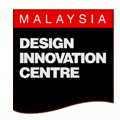v.2.0 |
|
 |
|
 |
|
:: |
|
|
 |
The setting up of Malaysia Design Innovation Centre (MDI) is sending out strong signals and should augur well for the country, says a visiting professor from the world-renowned Swinburne University of Technology, Australia. Prof Helmut Lueckenhausen, Swinburne’s Dean of Design, says through MDI, Tan Sri Lim Kok Wing - the brains behind the centre - is “not only building a culture of innovation but also contributing to the economy of Malaysia”. He says, “Tan Sri Lim has been a practical designer all his life. He has always been clear about what he wants to do here - producing a new generation of graduates well equipped for the global environment. MDI is the platform to carry out work in developing research. Through it, more high-level engagement with industry will be realised.” “Tan Sri Lim has always had a strong vision in place. He has always connected design with wealth creation. He believes in educating people to understand the potential of design in creating new realities in our economies. It is a philosophy that gels well with Swinburne,” Prof Lueckenhausen says, adding that it was such shared objectives that first drew Swinburne into partnership with Limkokwing University College of Creative Technology. “Both Swinburne and Limkokwing believe in applying design and working with industry. We have the capacity to bring two cultures together for common goals in developing design.” Prof Lueckenhausen’s recent visit to the university’s new campus in Cyberjaya allowed him to witness firsthand the development taking place at the adjacent MDI. Limkokwing’s 4,000 students from 52 countries stand to benefit from its link with MDI that allows them access to the latest technologies on campus. Fusing academic excellence with industry innovation. Tan Sri Lim has said that the focus is on producing creative, tech-savvy and industry-ready graduates for the global environment. “Their ability to innovate and to convert knowledge into new content places them ahead of their peers. We are able to produce such quality graduates because we fuse academic excellence with industry innovation. Our campus integrates the various design disciplines.” Limkokwing must be on the right track in terms of producing such graduates who would lead industry upon joining the workforce, if Prof Lueckenhausen’s comments are anything to go by. He says, “We were first attracted to Limkokwing because of the product design work we saw - the level of professionalism and the things happening then. We look for partners that give us long-term opportunities; we are not interested in short-term gains.” And certainly long-term gains are what Swinburne now foresees where MDI is concerned. Prof Lueckenhausen is impressed with what the centre represents, saying its opening should stimulate industry and pave the way for more development in the area of research. A whole network of future planning on design “The location in Cyberjaya with its whole futuristic essence is impressive,” he says. “It’s like saying ‘we must do new things, there must be new understanding’. And what makes it more exciting is that the government is central to all these. It’s saying we celebrate, innovate, and come up with new ideas and not only showcase what we have done but also where we are going from here. It’s exciting that the centre is part of a whole network of future planning on design.” Prof Lueckenhausen is also optimistic of Tan Sri Lim’s ability to turn the centre into the hub it has set out to be. “He should be able to validate the building - it is not an empty ‘temple’ but an active place where things get done. Every country has the experience of building impressive structures that later go to waste. This one is not an empty one; this one, I believe, will allow Malaysia to bridge with other cultures, other markets, and realise it goals as a hub. “Every industry needs to work in an international network, needs to have a gateway, and MDI has the potential to fill this well - to bridge Malaysian capacity with world capacity in the present and future. It’s a hub that pulls things in and sends things out.” Just like Australia and Malaysia are different in some ways and similar in others, Swinburne and Limkokwing have many same goals and battles and would like to focus on these, Prof Lueckenhausen says. “We share a lot of common views in terms of innovation. We both hope to influence future government and social policies in wealth creation.” Working with government to build nation Working in tandem with the government means constantly looking at the bigger picture. “Malaysia is making headway in the global environment. It’s a huge challenge but the country has a real growing economy, with significant SMIs (small medium industries),” he says, adding that there is urgent need to change the rigid Malaysian mindset. “The battles are the same in Australia - same problems to overcome. There has always been apathy towards design. There are conservative people who misunderstand the term. “Globalisation will leave some parts of the world behind. It’s both opportunity and threat at the same time. It’s time we changed the way we think. We have to interact. We have to network and work with other cultures to advance. “Like Malaysia, we know we have limited time to get ahead. But it’s a good thing that governments are now responding to work that is linked to design. Twenty years ago, governments would not even talk about it but now they have come to realise that manufacturing and all other kinds of outcomes need design.” Both Swinburne and Limkokwing, Prof Lueckenhausen says, understand practical application involving design in “making things work, making things happen”. “It involves understanding how complex design is. Design innovation requires us to understand the broad interpretation of the term. Design is not in its infancy but the understanding of it is. There has to be understanding of its central importance in our economies.” Limkokwing was Swinburne’s first international partner (its other collaborations are with universities in such countries as Hongkong, Sweden, Singapore and China) and the professor says he looks forward to more exchanges especially in terms of training for staff and students. “In Australia, we are a leading design school and our flagship programmes are in the areas of communications and design,” explains Prof Lueckenhausen. “We are also known for our film and television school. We have strong industry base and one of policies is that students spend one or two semesters engaging in industry work. Every single programme is run by an industry panel. We have to make sure an external advisory panel is in place. We are totally dedicated to this and that’s what we see represented at Limkokwing as well.” Limkokwing in fact integrates the various design disciplines, covering such areas as film production, music recording, architecture, TV & broadcasting, 3D animation, virtual reality and interactive multimedia. Various components in the areas of research, exhibition and showcasing are made available under one roof and these provide the platform for students to interface with industry’s most creative professionals. Students get to incubate ideas into commercially viable content that companies are likely to invest in. These innovative centres cover the areas of performance art, design, branding, communications, exhibition, enterprise, and business innovation. Also represented on campus - to the advantage of the Limkokwing student - are the Asean Design and Multimedia Institute, National Creativity & Innovation Institute, Malaysian Content Creation Council and Asia Creativity Institute. |
||
